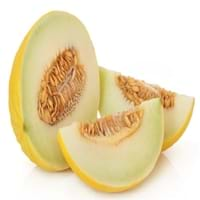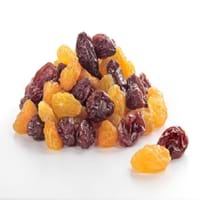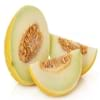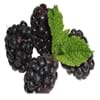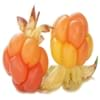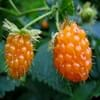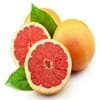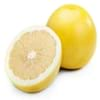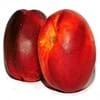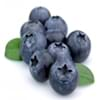Health Benefits
Body hydration, Cancer prevention, Gout treatment, Heart care, Treatment of skin Diseases
Acidity treatment, Cancer prevention, Good for diabetics, Prevents constipation, Prevents Anaemia
General Benefits
Body hydration, Controls blood pressure, Digestive aid, Eye care, Helps in weight loss, Improves eye vision, Maintains healthy cholesterol level, Strengthens bones
Boosts immune system, Cures fever, Eye care, Fights against infections, Strengthens bones
Skin Benefits
Anti-aging benefits, Brightens and lightens complexion, Hydrates skin, Reduces wrinkles, Treatment of dark spots
Anti-aging benefits, Reduces wrinkles, Skin rejuvenation
Hair Benefits
Prevents hair loss, Promotes longer and healthier hair, Protects hair
Protects hair
Allergy Symptoms
Abdominal cramps, Breathing difficulty, Coughing, Diarrhea, Hives, Hoarseness, Itching in eyes, Itching of mouth, Itching sensation in throat, Nasal congestion, Nausea, Skin rash, Wheezing
Anaphylaxis, Asthma, Breathing difficulty, Coughing, Drop in blood pressure, Hives, Skin rash, Stuffy nose, Swelling of mouth, tongue or lips, Wheezing
Side Effects
Allergic reaction
Allergic reaction
Lactating Women
Yes
Not Available
Best Time to Eat
As a snack in the late afternoon, Don't consume at night and before bed, Eat the fresh ones, avoid mixing with any other foods, don't eat after meal., Morning time (before lunch)
Any time except an hour after meal
Vitamin B5 (Pantothenic Acid)
Vitamin C (Ascorbic Acid)
Vitamin K (Phyllochinone)
Calories in Fresh Fruit with Peel
Not Available
Calories in Fresh Fruit without Peel
Not Available
Calories in Frozen Form
Not Available
Calories in Dried Form
Not Available
Calories in Canned Form
Not Available
Not Available
Season
All seasons
All seasons
Varieties
Green Flesh, Yellow Rind and Orange Flesh
Dark raisins, White or golden raisins, Sultanas and Currants
Seedless Variety
No
Not Available
Color
Green, Yellow
Black, Blue, Green, Purple, Yellow
Inside Color
Light Green
Brown
Origin
France
Central Europe, Western Asia
Grows on
Not Available
Not Available
Soil Type
Sandy loam, Well-drained
Clay loam, Sandy loam
Climatic Conditions
Warm
Warm
Facts about
- The average weight of honeydew melon is 6 pounds.
- 90% of a honeydew is water.
- In middle east countries, dried and roasted honeydew seeds are consumed as snacks.
- Honeydew melons can be 15-22 mm long.
- 30th April is known as National Raisin Day.
- Fresno, California is known as raisin capital of the world.
- Half of world's raisin supply is produced in California.
Top Producer
China
United States of America
Other Countries
Brazil, Egypt, India, Iran, Mexico, Morocco, Spain, Turkey, United States of America
Afghanistan, Argentina, Australia, Chile, China, Iran, South Africa, Turkey, Uzbekistan
Top Importer
Not Available
Europe
Top Exporter
Not Available
Turkey
Botanical Name
Cucumis melo
Vitis Vinifera
Synonym
Not Available
Not Available
Subkingdom
Tracheobionta
Tracheobionta
Division
Magnoliophyta
Magnoliophyta
Class
Magnoliopsida
Magnoliopsida
Subclass
Dillenhidae
Not Available
Order
Cucurbitales
Vitales
Family
Cucurbitaceae
Vitaceae
Species
C. melo
Vitis vinifera
Generic Group
Gourd
Grape
Difference Between Honeydew and Raisin
We might think that Honeydew and Raisin are similar with respect to nutritional value and health benefits. But the nutrient content of both fruits is different. Honeydew and Raisin Facts such as their taste, shape, color, and size are also distinct. The difference between Honeydew and Raisin is explained here.
The amount of calories in 100 gm of fresh Honeydew and Raisin with peel is Not Available and 299.00 kcal and the amount of calories without peel is 36.00 kcal and Not Available respectively. Thus, Honeydew and Raisin belong to Low Calorie Fruits and High Calorie Fruits category.These fruits might or might not differ with respect to their scientific classification. The order of Honeydew and Raisin is Cucurbitales and Vitales respectively. Honeydew belongs to Cucurbitaceae family and Raisin belongs to Vitaceae family. Honeydew belongs to Cucumis genus of C. melo species and Raisin belongs to Vitis genus of Vitis vinifera species. Beings plants, both fruits belong to Plantae Kingdom.
